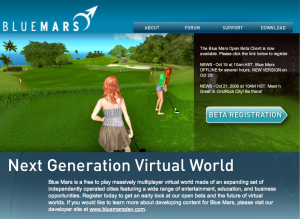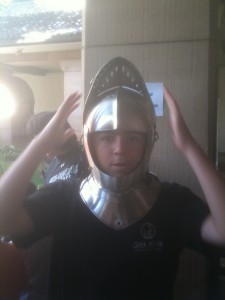We’ve begun to investigate the underlying ideas behind game design. As always, my reflection stems from considerations of learning environments, and how they are emerging, with a lens on schools, and education in general.
We have been reading from:
Rouse, R., & Ogden, S. (2004). Game design theory & practice, second edition (2nd ed.). Plano, Tex.: Wordware Pub.
In particular this week, topics on storytelling (Chapter 11) and multiplayer (Chapter 13).
As it turns out, today, I was visiting the Honolulu Academy of Arts, because it was family Sunday, and the topic was medieval times.
I had in tow my seven-year-old and 12 year old, who enjoyed the swordplay, the Lego castles, the catapult building, etc. While I was there, I was thinking about the relative simplicity of their visitor design. Placards next to artwork, introductory walls to explain areas of exhibit, then the relative minor influence of technology and museums to visit. Short video of one exhibit room:
The readings from
Braverman, B. E. (1988). Toward an Instructional Design for Art Exhibitions. Journal of Aesthetic Education, 22(3), 85-96.
make the case that visits to spaces that have a focus on aesthetics have a very different mission, and displays and design are very different with that kind of focus. In most art museums, the focus is not specifically content, but more appreciation and development of the right brain part of our experience: creativity, context, beauty, passion.
In places like the MET school in Providence, there is a movement away from content as core and the movement towards directed interests, creativity and context as a starting point. In spaces like museums, there is a shift from content as core and more an effort to wrap in context as the main experience. In the midst of this, I am reading
Willingham, D. T. (2009). Why don’t students like school? : a cognitive scientist answers questions about how the mind works and what it means for your classroom. San Francisco: Jossey-Bass.
Early in the book, he talks about the concept of prior knowledge as a significant determinant in meaning making. Essentially, when we learn and experience, we first draw on our prior knowledge to help us make sense of what we are seeing. In a museum, we may see an exhibit with a surrealist painter, and without any prior knowledge, we would just see objects on a canvas, a bizarre mix of shape and form, but if we have some background knowledge of the historical setting that it comes from, when we have other artists from that time that we already know, we have an easier time both appreciating and understanding the work for what it is.
In Rouse’s book, in the chapters on storytelling and multiplayer, he still lays out the significance of drawing in the player, explaining the importance of not overwhelming or killing off a new player as a significant design element. There is an inherent tension in designing games to either get to the content, in the case of educational games, or the story, in the case of more fun/experience focused games, and there is a challenge here for educators. When the environment is designed too closely around the content, the engagement and interest will likely go down, and there will be the inherent problem with matching learners incoming, prior knowledge so as to best set up the learning environment. As a result, many games that try to focus on educational concepts, have either elaborate introduction or simple sequences that are not very interesting or rewarding, to lay a foundation of prior knowledge. One of the strengths in the engaging single and multiplayer games is the ability to start right into the story, and bring in information as it is needed to help the learning experience. This kind of scaffolding experience is more highly engaging, but often does not have nearly the educational depth that most teachers and schools would find a prerequisite for usefulness in a learning setting. As an example, we played Halo this week in class, and although it was highly engaging, I’m not sure I would replace my physics class (yet) with this virtual world.
The challenge then, for the major project that will be due in this class (ETEC 697), is to marry the best of what cognitive research shows works in the brain to build knowledge, and to structure it in such a way so it feels engaging and appropriate for the user. One of the ways to take advantage of that is through the social, multi-user interface that is emerging in game design.
Another experience this weekend gave some insight into this. I was at the Kapiolani Community College farmers market, and was struck by the sense of community that exists at this weekly event. Picture below:

There were hundreds of people, almost none of whom knew each other, but there was a common sense of purpose about being there that brought a true sense of community and shared experience to the event. As a result, people were more likely to interact, share stories, and drop their guard in order to the part of the experience. As I think about Second Life when it is at its best, I am struck by that same possibility: being in a place where a community can form around a good idea, and the nature of common mission and presence would allow conversation and knowledge building to happen as the users interact. We are not there yet, as the places that exist are still either too forced by their nature to specific goals, or experiences are too general to really be powerfully educational, but next-generation interactive design has the potential to go there. One effort towards this road is a emergent virtual world designed for educational experiences, but with a first look and feel as a engaging social community: Blue Mars. Time will tell if spaces like this will rise to the needs of learners AND schools.

A few gratuitous shots of my boys in medieval garb:


